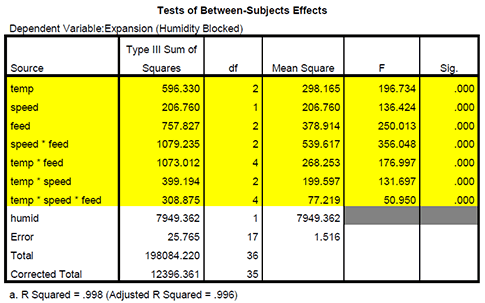Yesterday in “Blocking Out the Nuisance, Part One,” we saw the results of an experiment done by That Guy Over There that didn’t control for the environmental variable of humidity. There was a lot of variability in that experiment, so we didn’t see a whole lot of improvement to be made. I also gave you the data from a blocked design that you created which controlled for humidity. Let’s take a look at the analysis and see if we can find out anything more.
|
ADVERTISEMENT |
You perform the analysis at α = 0.05, test and pass the assumptions for analysis of variance (ANOVA), and find the following:

Figure 1: Analysis of variance (ANOVA) with humidity blocked
In the immortal words of the philosopher Neo, “Whoa.”
…
Add new comment